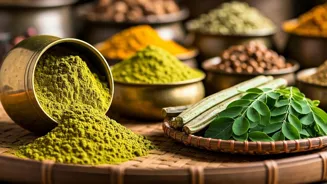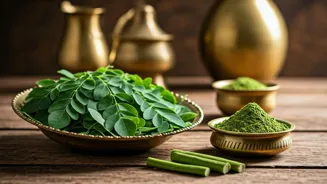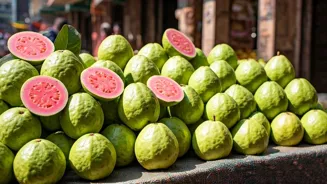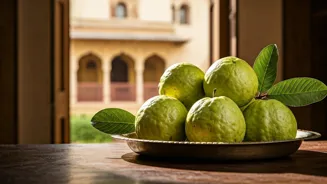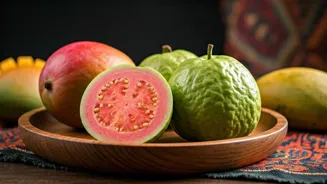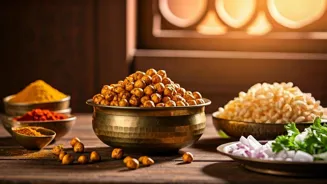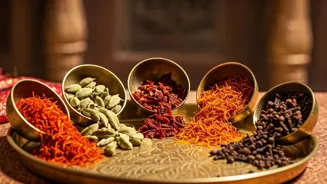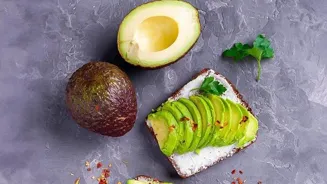Moringa's Roots
Moringa, a treasure from South Asia and Africa, has been a culinary and medicinal staple in India for generations. Every part of the tree, from leaves
to drumsticks, is edible and packed with nutrients. It's common in curries and soups, offering a familiar touch for many Indians. The rise of moringa in the West showcases its global appeal, making it a familiar ingredient.
Powder's Popularity
Moringa powder has become the star in Western markets due to its convenience. It's shelf-stable, easy to use, and can be added to almost anything. For Indians living abroad, this makes it a practical way to enjoy moringa's benefits. It retains essential nutrients, making it a potent supplement, particularly where fresh leaves are unavailable, which resonates with the fast-paced lifestyle.
Leaves vs. Fruit
Fresh moringa leaves are nutrient-rich, offering a complete profile of vitamins, minerals, and proteins. Moringa fruit (drumsticks), are also packed with vitamin C and fiber and commonly used in Indian cuisine. While powder retains much of the goodness, fresh leaves provide the complete nutrient package. Each form offers unique benefits, allowing you to choose what suits your needs and preference.
Nutrient Showdown
Comparing moringa forms reveals exciting differences. Moringa powder provides a convenient alternative to fresh leaves while keeping vital nutrients. The fruit, or drumsticks, are higher in vitamin C and fiber. Studies indicate moringa leaf powder has benefits, even outperforming iron tablets in anemia studies. Hence, the best choice depends on your specific dietary needs and availability.
Moringa for India
For Indians, moringa is more than just a superfood; it's a cultural connection. Whether you use powder in a smoothie or drumsticks in a curry, moringa can enrich your life. Given the prevalence of moringa in traditional Indian cooking, incorporating it into daily meals is a seamless way to integrate its health benefits into the familiar flavors of your home.
